Customers are talking about your brand; their conversations are a potent influencer in an era where trust is premium. That's great news! But what do you do next?
Creating a referral program is the next best step. Referral marketing harnesses this organic enthusiasm into a focused marketing channel.
But what turns a simple recommendation and referrer into an active participant in your growth strategy?
The answer lies in the Rewards.
Welcome to the ultimate guide on Referral Marketing Rewards, where we'll unearth the power of incentivizing customer advocacy.
Whether you're a brand looking to supercharge word-of-mouth, a marketing professional wanting to enhance your strategy, or an e-commerce maven aiming to take your outreach to the next level—stick around.
This is your blueprint for rewarding referrals like a pro.
Using referral rewards is a potent technique to reap insane results for your brand.
Traditionally, word-of-mouth and social proof have been the underlying engines of this referral method. But your brand can supercharge this process by integrating rewards and incentives.
We have identified three invaluable gains of adding rewards in businesses (which your brand should also experience!).
In essence, rewards create a community of brand advocates who are consistently involved, not because they have to, but because they want to.
Choosing the appropriate type of referral reward can be a game-changer in your program. You may focus on your existing customers, new referrals, both new and old customers, or none of them.
Let’s move and unveil them one by one.
This is precisely as it sounds. Opting for this in your referral campaign indicates that your brand rewards only the referrer or the referred individual for their participation – not both.
This is not popular, but it could still be effective if the recommendation comes from a trusted individual.
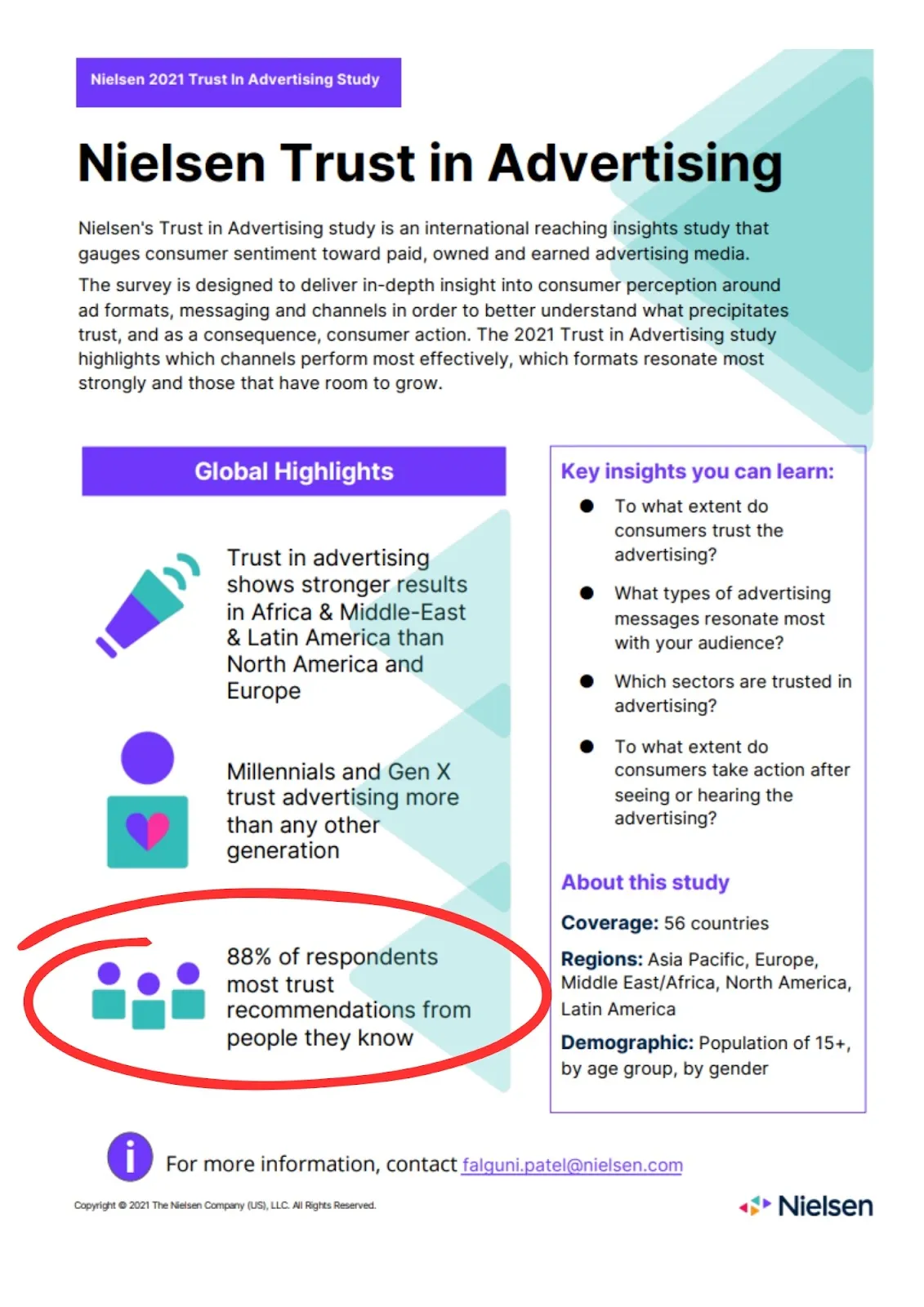
After all, 88% of consumers place more trust in peer recommendations than any other form of endorsement.
Pros
Cons
I know it’s tricky. The next section might help you decide.
The best time to use a one-sided incentive design for your referral marketing program is when you want to achieve specific goals within a constrained budget.
For instance, if your primary goal is to acquire new customers rapidly, rewarding only the referrer could be highly effective, especially if your existing customer base is already loyal and engaged.
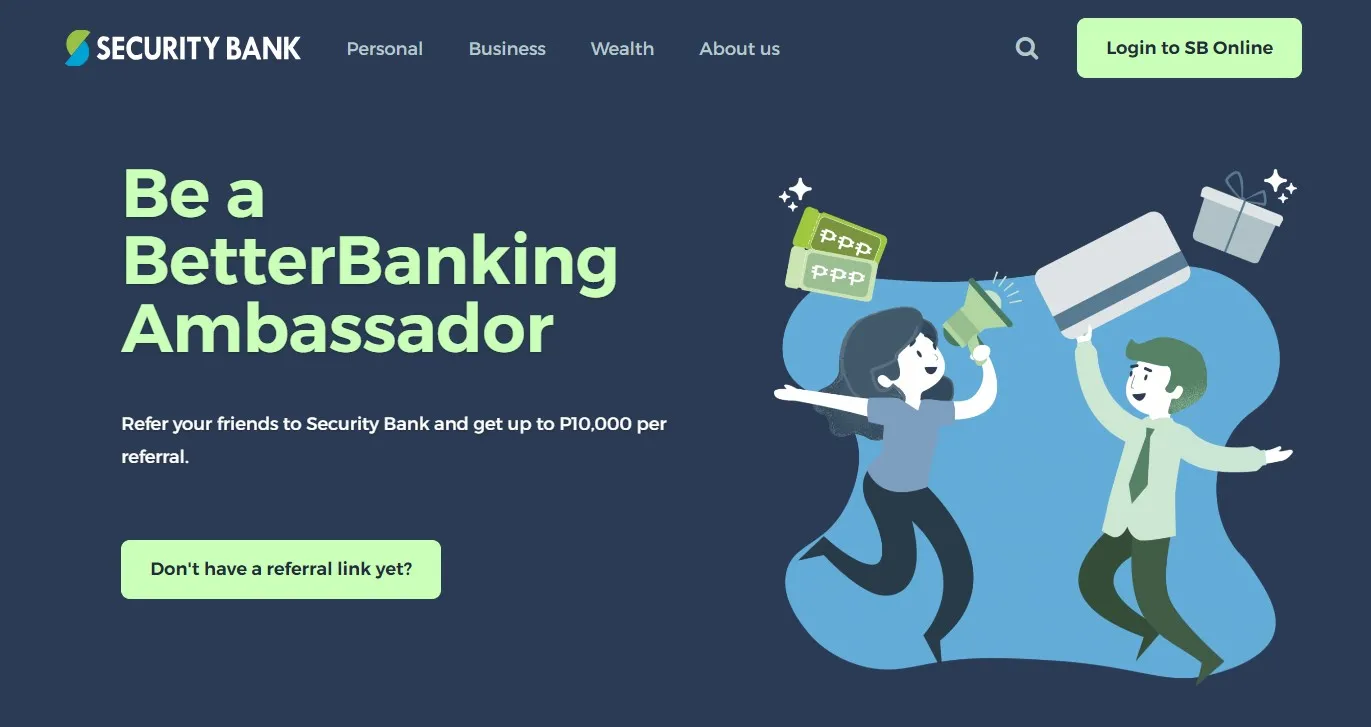
This strategy is also useful when launching a new product or service. Targeting referrers is key when aiming for rapid information dissemination. However, to cultivate a robust customer base, incentivizing new customers can foster a sense of belonging and affinity to the brand.
Also known as a double-sided program, it rewards the existing and the referred customer. There is no need to choose whom to reward!
In your referral program, you may consider providing identical rewards (e.g., ‘You and your friend will each get $10 cash back!’) or varying ones (e.g., ‘Friend gets $5, you’ll get $10!’).
Finding the balance between the value they deserve, what your brand can handle, and achieving your referral goals is challenging but worth it.
Pros
Cons
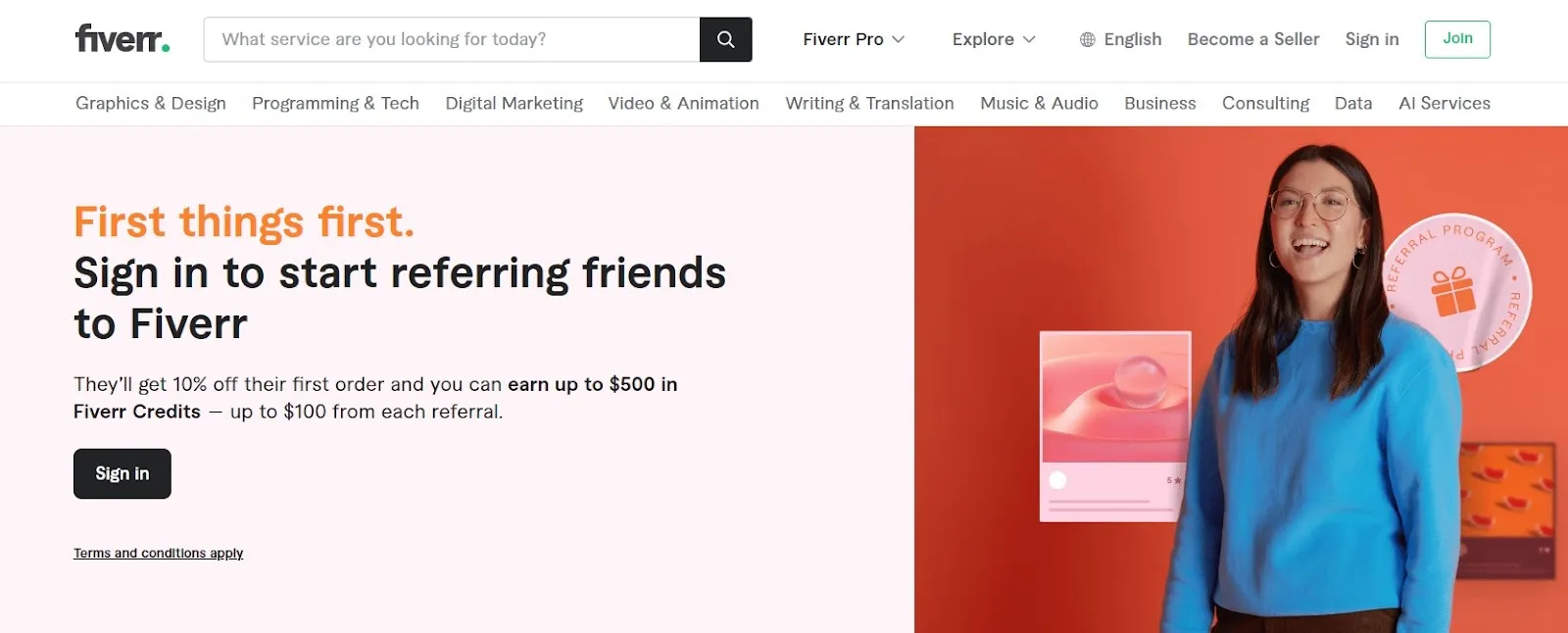
As the name implies, this doesn’t involve any reward or incentive for the referee and the new referral. When operating costs and robust reward rationale are in question, brands may opt for this type of reward.
Pros
Cons
Remember, if you choose this option, you must create a stellar experience so your current customers will be excited to share your brand with their networks.

Your next question might be, "What are the best rewards for my brand?".
The answer may vary based on multiple factors, which we will discuss separately. For now, let's unpack the different kinds of rewards that you may consider for your brand.
This leverages the power of public acknowledgment to motivate customers to share your brand. This form of reward taps into the intrinsic human desire for social recognition.
It is a highly effective tool in encouraging referrals and amplifying your brand's reach and appeal through organic social interactions.
When a customer refers someone and that referral is successful, you spotlight this achievement on your various platforms.
You can do this through:
The key is to make the referrer feel valued and seen, not just by your brand, but by their peers and wider audience.
Just make sure that before you mention anyone, you ask for their permission first.
Social Boost is also useful in a B2B setting as it could also promote their brand.
The primary advantage of social boosting is that it's cost-effective for your business. It is best employed to maximize your brand presence on social media and foster a sense of community among your customer base. And, of course, when your referral marketing budget is low.
Before you get excited, you need to maintain the right balance. Customers might feel it is just free marketing if not sincerely executed, and we're sure you wouldn't like that.
Internal currency, such as a points system, creates a bespoke ecosystem within your brand.
Points (e.g., loyalty points and referral credits) act as currency that can be earned and redeemed.
Customers receive points for successful referrals. You must communicate eligibility criteria to the customers, such as the number of points per referred customer, the service the referral should avail, or the product they should purchase. And don’t forget the deadlines for accumulating points.

Accumulated points can be redeemed in various ways, such as for exclusive discounts, products, or even access to special events. This makes them more advantageous than money off (e.g., $10 off) or cash back for a one-time purchase.
The beauty of an internal currency system lies in its flexibility. You can tailor the rewards to your brand and customers' preferences for a more personalized and engaging experience.
This can also result in continuous engagement with your brand as customers return to earn more points and redeem their rewards!
Of course, it comes with its own set of challenges.
Maintaining a points system requires meticulous planning and robust tracking mechanisms to ensure fairness and accuracy. You also need to ensure the perceived value of the points remains high for continuous engagement.
Nonetheless, your brand can unlock a new level of customer loyalty and advocacy by carefully balancing rewards and challenges and choosing the right time to implement (e.g., product launch, sales, or slower business periods).
People love stickers, cool t-shirts, and colorful socks. Oh, they also love feeling like part of a movement.
One of the best ways to reward them for being your ambassadors is to make them feel they are part of your team; after all, a team needs a uniform!
These “uniforms” can be obtained through eligibility criteria and distributed through different channels, including shipping directly to clients, promo events and meet-ups, and in-store pick-ups.

However, since these are physical products, they usually cost more than digital rewards.
Logistical challenges are also complex, from production to distribution and even inventory in cases where a diverse range of products are offered.
Finally, a one-size-fits-all idea is not applicable in this category. Not all rewards may suit or appeal to every customer, potentially affecting the perceived value of the reward.
But despite its costs and logistical demands, its strategy promises tangible rewards in customer satisfaction, brand advocacy, and lasting impression. After all, who doesn’t want a free product?
This approach not only appreciates and rewards your customers but subtly showcases the premium aspects of your offering, tempting them to invest further in your brand.
This type of reward is versatile across different sectors.
For instance, E-commerce stores might upgrade shipping to express without additional charges. Service-oriented businesses, like fitness studios, could provide access to exclusive classes or personal training sessions as a tangible upgrade.
Before using this as a reward, you must establish a clear set of criteria.
These might include a minimum number of successful referrals in a specific timeframe (e.g., offering an upgrade after successfully referring three new customers within two months).

This can be as streamlined or as personalized as your business model allows. You may integrate your referral program into your customer relationship management (CRM) system to track referrals and automatically upgrade services once the eligibility criteria are met.
For a more personalized touch, consider notifying customers of their upgrade through a bespoke email or a personal call, thanking them for their referrals, and explaining the new benefits they can access.
This method reinforces positive behavior and strengthens the customer-brand relationship, making it an all-encompassing win!
Essentially, offering service or product upgrades taps customers' desire for enhanced brand experiences. This strategy speaks volumes about your appreciation while effectively using your premium offerings as a magnet for further investment and loyalty!
Digital products are flexible and innovative reward options. They encompass a variety of virtual goods, such as e-books, software subscriptions, online courses, or even exclusive digital content that can be accessed or downloaded instantly.
The allure of digital products lies in their immediate delivery and the vast potential for customization according to the interests and needs of your audience.
Digital products shine best in online-centric businesses or when targeting a tech-savvy audience. They’re perfect for immediate gratification post-referral and can be especially powerful when the rewards align with your target demographic's interests or needs.
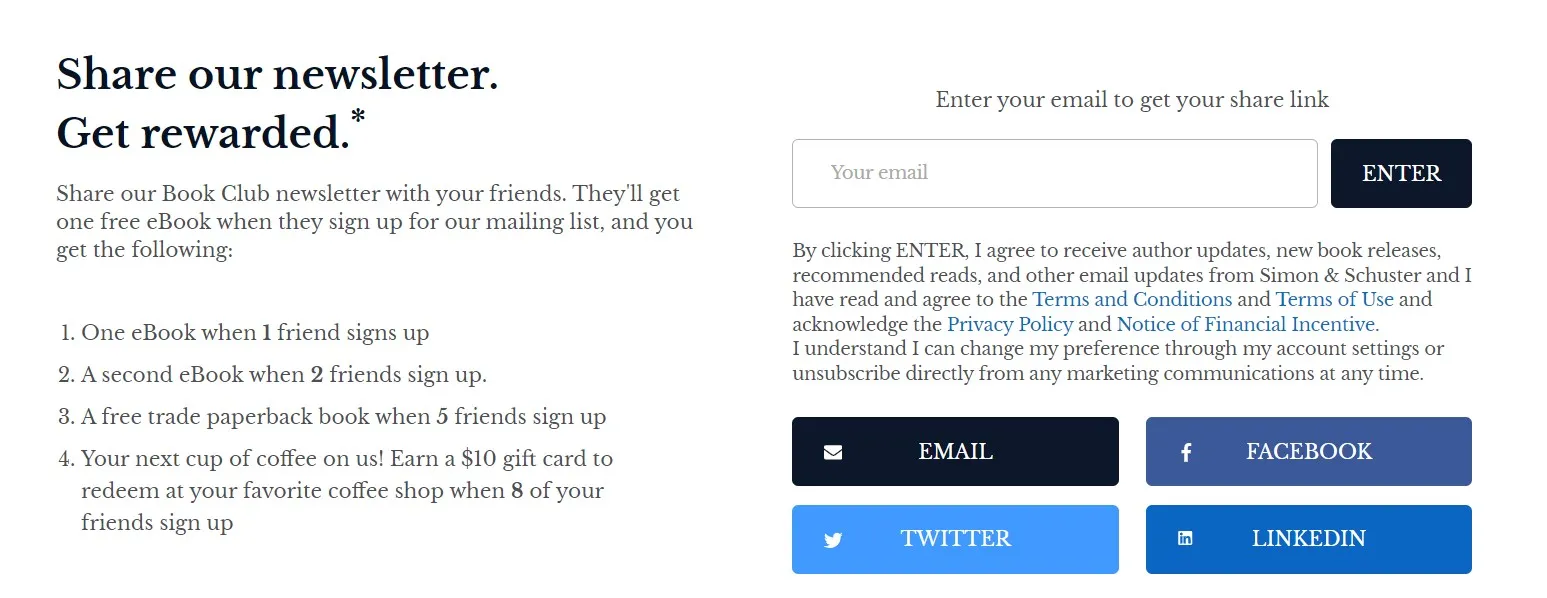
For example, an online university can unlock free courses, while a lifestyle brand could provide free e-books or access to an online community of like-minded people.
And before we forget, it's cost-effective and easier to manage for your business.
Digital products usually require minimal production cost, and distribution is effortless, as no physical items are involved.
While the perceived value of digital products can be a hurdle since they aren't tangible and/or due to digital clutter, this can be easily overcome by offering high-quality and relevant products.
Overall, it offers a competitive edge as a reward for your referral program!
This covers offering access to valuable information, insights, or experiences not readily available to the general public.
For businesses in the content creation industry (e.g., content creators and game makers), offering this as a reward can be highly effective. This could include access to premium articles, videos, in-game stuff, and online communities — a higher level than our previous discussion on digital products.
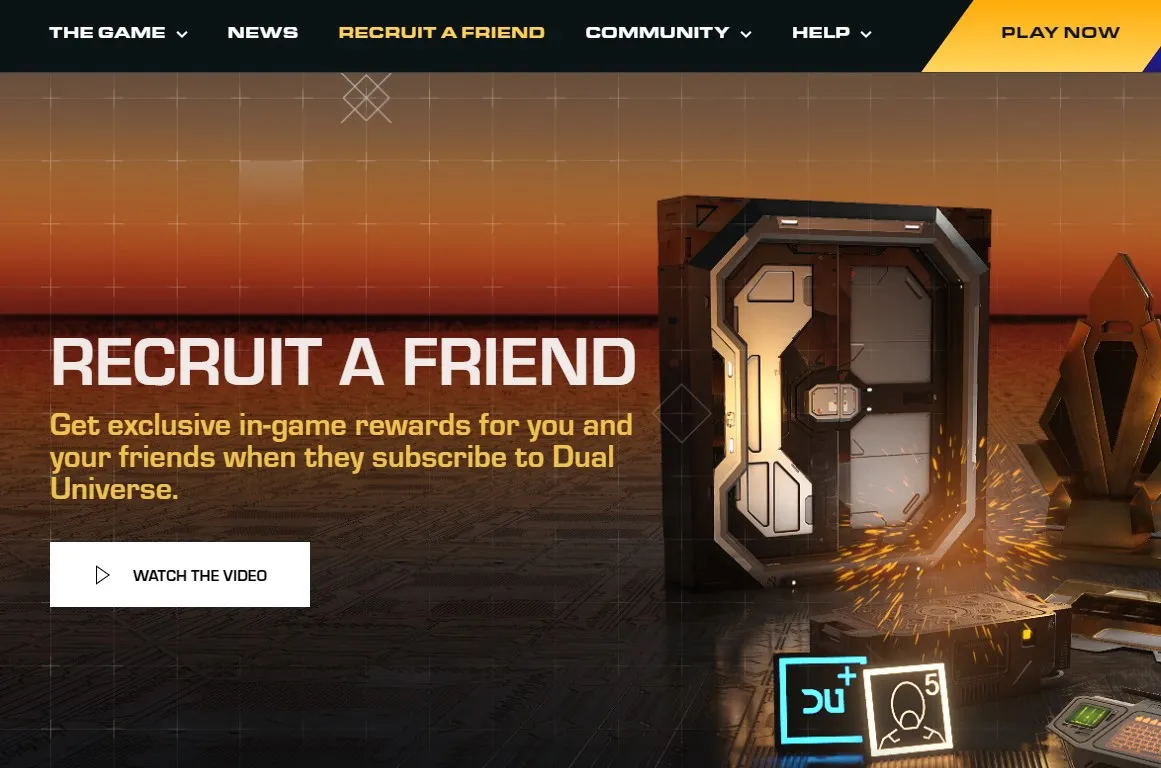
It allows you to showcase your expertise and builds a sense of exclusivity for your brand, increasing perceived value and enhancing brand loyalty and retention rates.
Looking for a unique and potentially lucrative way to reward your customers? Then offer company stocks!
This reward infuses customers with an extraordinary sense of investment and ownership. It uniquely engages referrals and aligns customers' interests with your brand's growth and success.
Before considering this option, it's crucial to establish your eligibility criteria, conduct research, and understand the legal or regulatory requirements involved.
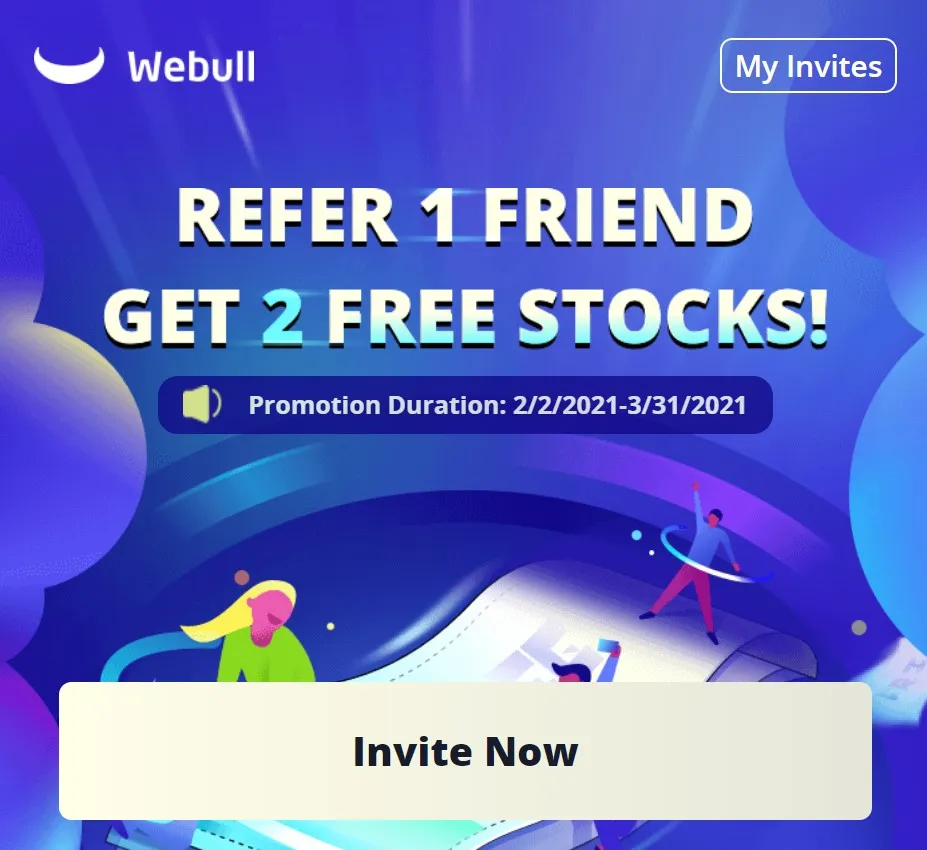
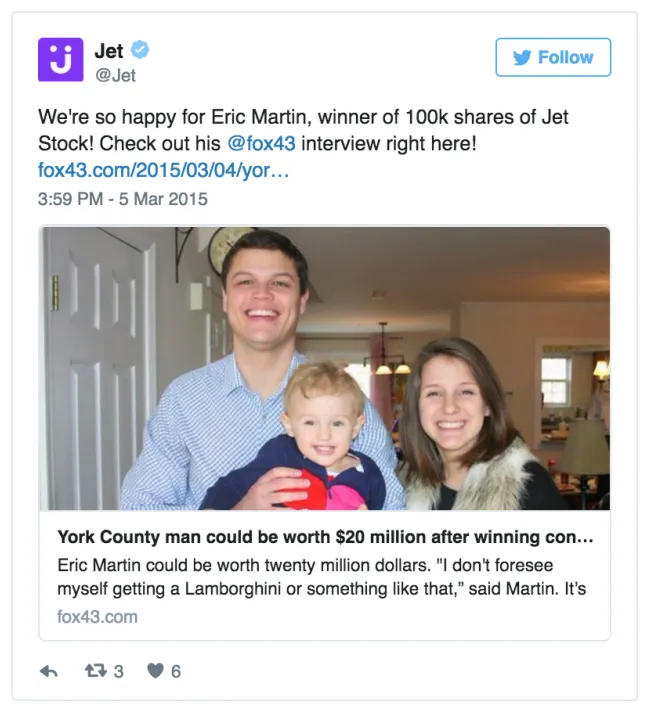
Eligibility might be based on a tiered referral achievement system, where the number of successful referrals correlates with the amount of stock rewarded.
For example, a customer might earn a company share for every five successful referrals. This ensures the rewards are reserved for your most dedicated and successful referrers, who, of course, deserve the best.
To simplify the process, the brand can distribute company stocks through partnerships with stock gifting platforms. This ensures that each transaction complies with financial regulations and is easy for the recipient to accept and understand.
This includes complying with the regulation of the Securities and Exchange Commission (SEC, tax implications for both the giver and receiver, and ensuring that all participants are adequately informed about the nature of the reward.
Transparency is key—clear communication about the process, potential tax liabilities, and that stocks are subject to market risks is essential for maintaining trust and enthusiasm in your program.
Despite its complexity, this form of reward represents a dynamic and potentially highly rewarding experience for your customers and your brand!
Promo codes and discount coupons inject immediate and direct value into the hands of your customers, serving as a tangible reward for their engagement in your referral program.
This method is not just about slashing prices; you aim to make the customers feel appreciated and savvy savers.

However, there are limitations to consider. Over-reliance on discounts can devalue your products or services in the eyes of consumers, leading them to wait for discounts instead of purchasing at full price.
A good alternative is bundling the purchase with a gift when rewards are exclusive to the referrers. The gift may have low cash value but will increase the value of your product and their experience.
Additionally, widespread distribution of promo codes can reduce margins if not carefully managed within an overall marketing strategy.
In a world valuing personalization and exclusivity, providing Premium or VIP access as a referral reward boosts customer engagement to new levels.
Remember, it's more than just freebies; it's about creating a tiered experience that makes customers feel valued and recognized for their loyalty and contributions.
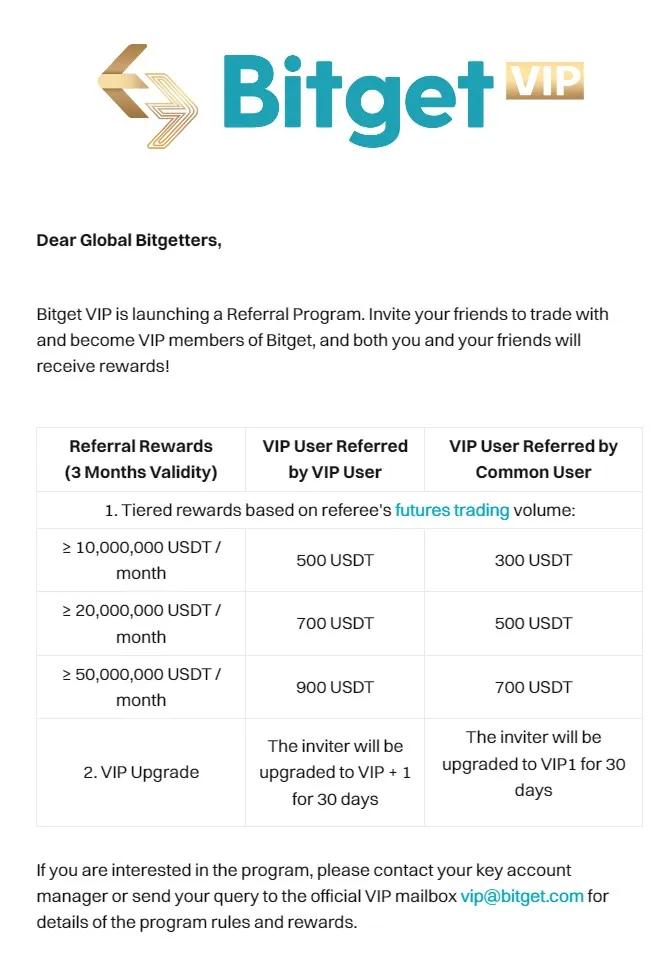
This type of reward grants VIP status to referrers who reach certain milestones in your referral program. Depending on your eligibility criteria, you may create different access levels or tiers in your program.
For instance,
By using this reward system, you motivate customers to participate in your referral program and excel at it!
Experiential rewards transform traditional referral marketing by offering unforgettable moments instead of tangible goods. They amplify customer engagement and generate narratives that resonate well beyond the experience.
Types of experiences range from exclusive retreats to adrenaline-packed adventures.
Picture offering your top referrers an all-expenses-paid getaway to a serene destination, tickets to high-profile events, or skydiving trips to your thrill-seeking referrers.
However, its execution and logistics require meticulous planning, especially when personalization is crucial. Collaboration with experienced providers will help ensure a seamless experience for your brand.
While experiential rewards can be expensive for your brand, you can transform them into another marketing investment to amplify your brand’s visibility. Imagine harnessing the power of your audience’s stories by incorporating terms that encourage them to share their experiences on social media.
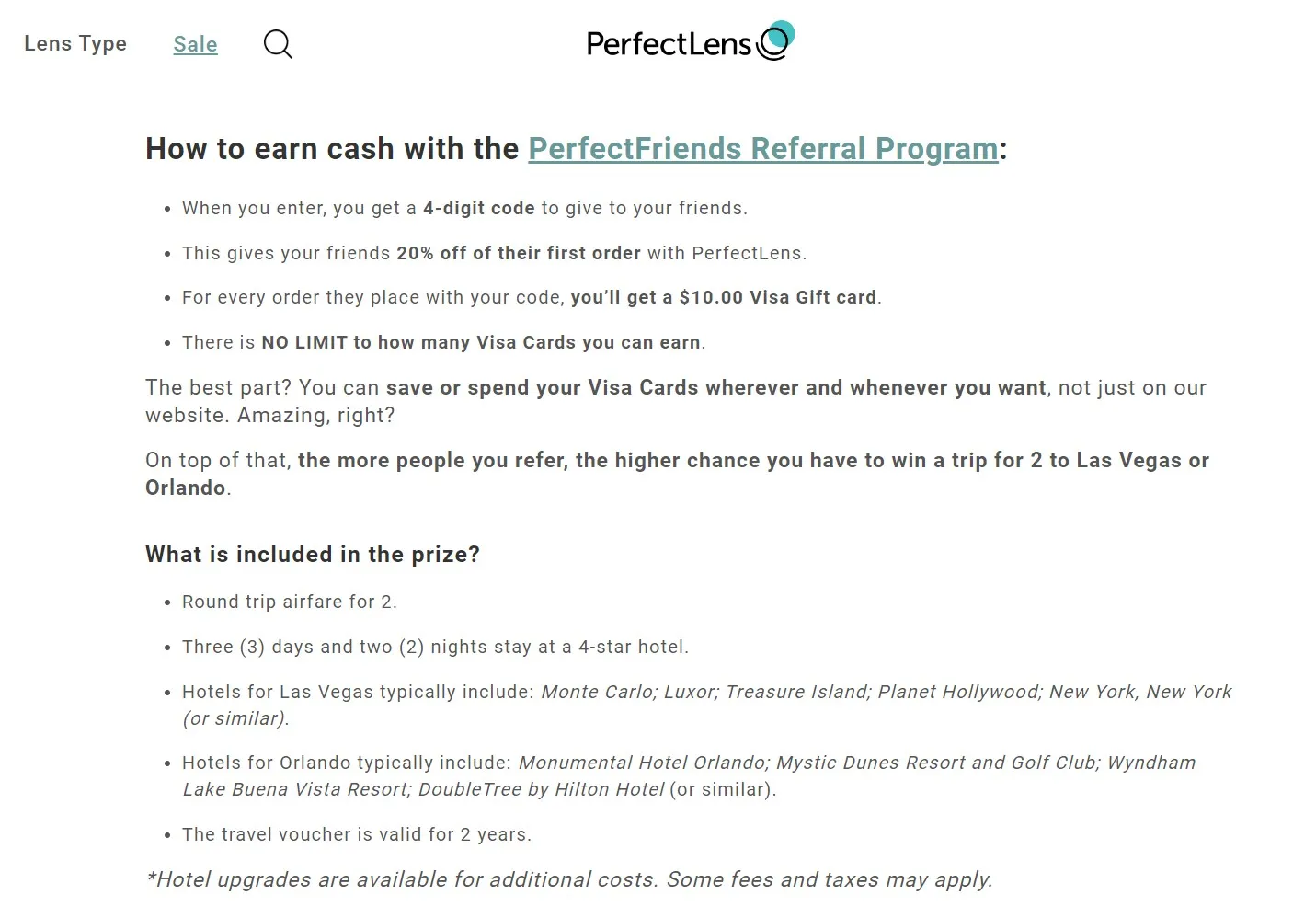
You may also consider creative content like blogs, videos, and exclusive interviews, which can later serve as marketing materials. This strategic approach offsets the initial costs and enriches your brand's narrative.
Another cost-effective approach is to restrict reward recipients. You may consider setting up a leaderboard where only the top achievers could receive rewards. Your brand could also implement a referral program resembling a raffle, where only the winner earns the rewards.
In the end, carefully planning your referral marketing program is needed to ensure that your business's gains outweigh the expenses of this reward.
Cash and cash-back rewards stand out among all the types of rewards. The referrer and/or the new customer get a cash reward and cash back for every successful referral. Simple and straightforward.
This form of reward is well appreciated and universally understood. It brings immediate satisfaction, can be used for any purpose, and is easy to communicate.
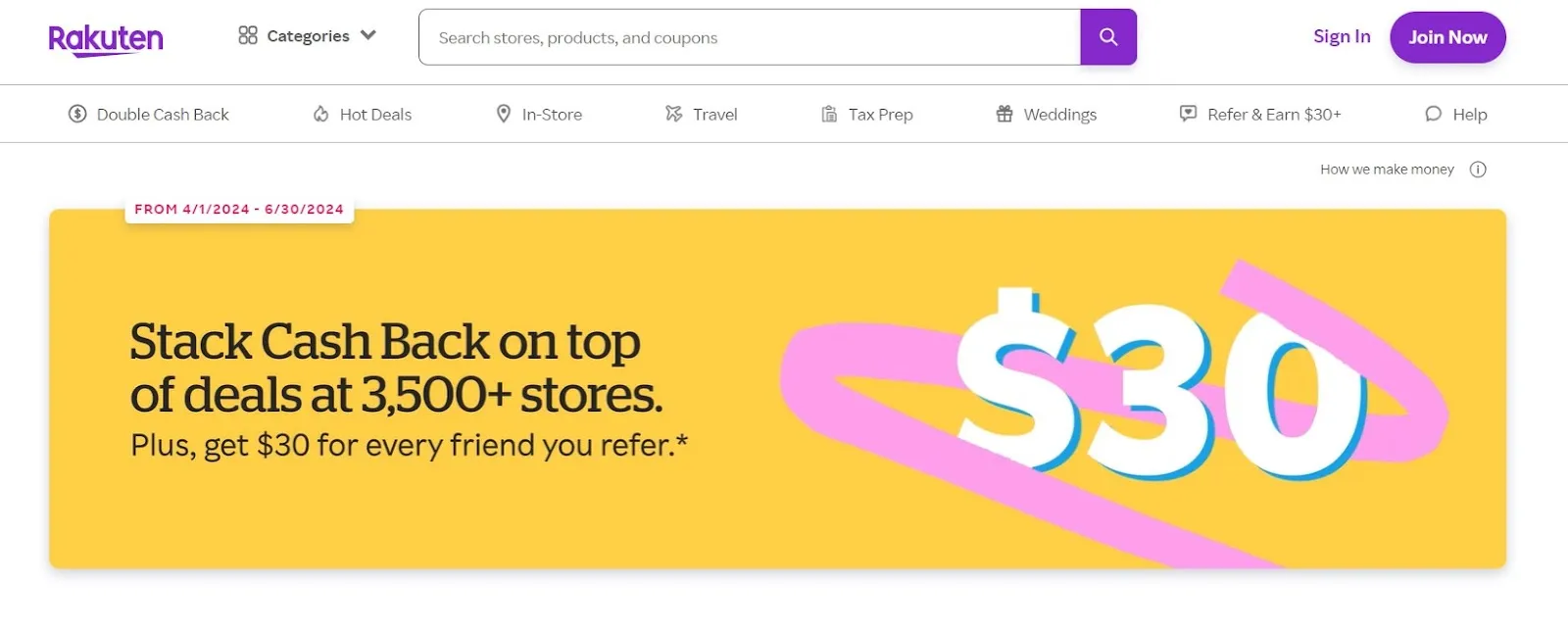
On the flip side, however, a challenge lies in its potential to create “transactional” relationships instead of brand loyalty.
So, it’s best to know the optimal timing vis-à-vis your goal. For instance, if your brand is looking to quickly increase its customer base or clear its inventory, cash rewards in this period can incentivize a surge in referrals.
However, this reward is not advisable if you have high-value products or services where customer relationships are paramount.
Overall, these rewards are valuable partners in your referral marketing program. But remember that there is no one-size-fits-all type of reward for every business, purpose, and timing. The key lies in providing rewards your customer wants while bringing in your brand identity and goals.
If you center your audience and brand identity in your referral marketing program, you will reap insane results.
Ask yourself a simple question: Would I enjoy this reward if I am in their situation? Having a yes answer is a good start.
The delivery method of your reward is crucial in amplifying the customer's experience and satisfaction. Whether digital delivery, physical shipment, or organizing in-person meet-ups, each approach has unique advantages that can improve the perceived value of your rewards.
In our fast-paced digital world, delivering referral rewards through digital channels is efficient and often expected. Digital delivery puts rewards directly into customers' hands with speed and ease.
For example, an online retailer can email an e-gift card once a referral is confirmed. Meanwhile, an online academy could unlock an exclusive course and electronically notify the user (e.g., app or email) after a successful referral.
Digital delivery allows for straightforward tracking and analysis, enabling your brand to measure the effectiveness of your referral programs in real time. It's also ideal for time-sensitive rewards, such as discount codes for upcoming sales, ensuring customers can take full advantage without delay.
Before selecting this, you must consider your audience preference, cybersecurity measures, and integration into your existing platforms to provide a smooth user experience.
Remember that a robust referral program platform like Viral Loops is essential to boost effectiveness and efficiency.
These platforms can automate the distribution of unique promo codes, track their usage, and set expiration dates, creating a sense of urgency in their utilization and repeat visits to your site or store. Less stress on your end!
Physical delivery remains a compelling method for distributing rewards in a referral marketing program.
A personalized package delivered could enrich your customer's unboxing experience, creating a deeper emotional connection with your brand and enhancing the perceived value of the reward. It is also necessary for physical rewards, like merchandise.
Meanwhile, navigating the shipping logistics of physical delivery requires a strategic approach. It includes choosing the right shipping partners, offering tracking options for transparency, and covering free shipping to recipients.
For higher-value rewards, considering insurance may also be prudent to protect against loss or damage. With all these logistical concerns, expect higher costs compared with digital rewards.
When your referral program spans multiple countries, international shipping becomes a critical aspect to address. Your brand must understand and comply with each destination country's customs regulations and tax policies.
Offering a localized range of rewards can mitigate some of these complexities, ensuring that rewards are appropriate and cost-effective to deliver globally.
This approach involves directly handing over rewards to recipients through face-to-face interactions. Imagine the delight in your customers’ eyes as they receive beautifully packaged rewards during a special brand event or the personal touch of handing a thank-you gift over a casual coffee or in-store meet-up.
Such moments can significantly amplify the perceived value of the reward and deepen the emotional bond with your brand. This also allows immediate customer satisfaction and preference feedback and creates buzz for your brand through word-of-mouth or social media sharing.
However, it is important to recognize that in-person delivery has scalability issues besides the higher cost and logistics of delivering physical rewards. Targeting a wide audience or those in different geographic locations can be challenging with this approach as it requires personal interaction.
In-person delivery shines brightest in the context of high-value rewards for top-tier referrals, in tight-knit community settings, or when launching exclusive products. It's also particularly effective for B2B referrals, where establishing a strong personal relationship is crucial.
Hosting an annual appreciation event or participating in industry meet-ups where you can directly reward referrals adds unparalleled sincerity to your gratitude.
As promised, here's an attempt to answer the question about "the best reward for your brand." But instead of recommending an exact type of reward, let's focus on key considerations in your selection process.
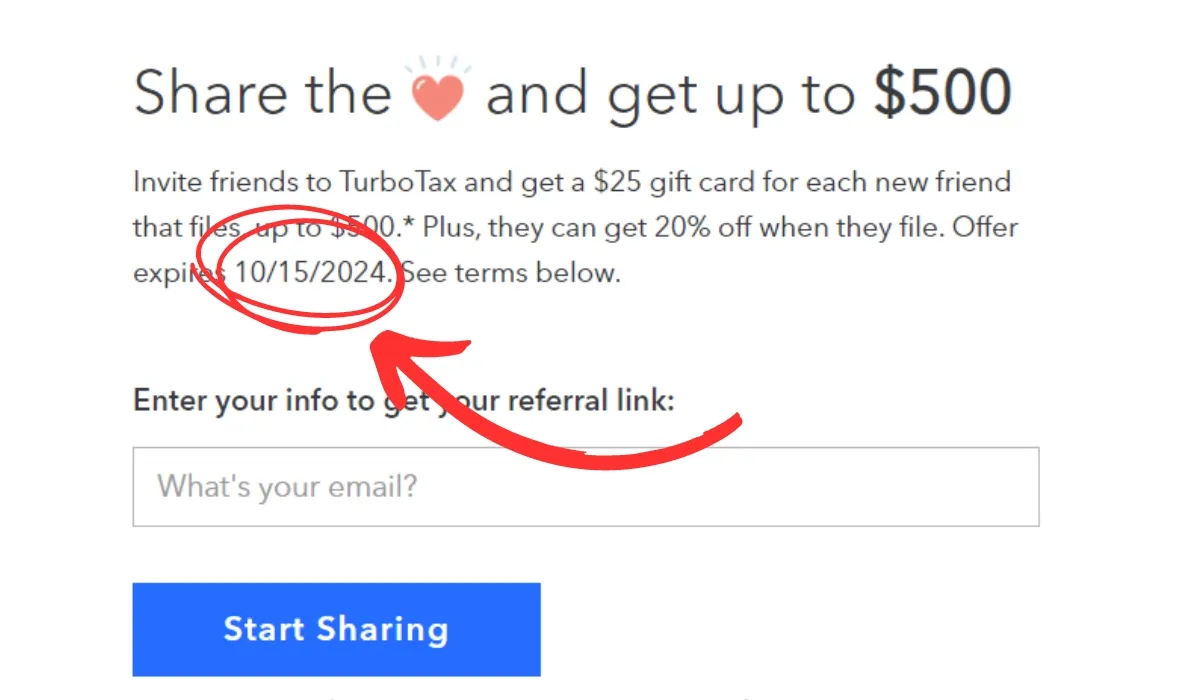
A mix of Key Performance Indicators (KPIs) and direct feedback mechanisms is a good starting point for measuring the success of your referral rewards program.

Interacting with your brand's audience through surveys and feedback platforms is invaluable for capturing the nuanced layers of program perception and satisfaction. Ask pointed questions about their experience with the referral process, the relevance of the rewards and their delivery method, and suggestions for improvement.
This not only garners critical insights but also reinforces to your customers that their opinions are valued and considered.
The true power of data lies in its ability to inform and inspire your next action. You can identify patterns, preferences, and pain points by continually analyzing KPIs and customer feedback.
This will ensure that your referral rewards program remains relevant and useful with your audience, competitive in the market, and aligned with your business goals.
Adjustments may include:
By responding to these insights, you can optimize your program’s effectiveness and demonstrate your commitment to a customer-centric brand, improving customer reach and loyalty.
The tips we have previously provided you are based on a good mix of companies that have mastered the art of using the right reward for their referral marketing program.
Check the stories of some of these brands here:
Klook, a booking platform for travel activities in multiple countries, rewards the referrer and the friend with a discount on their next booking. It uses multiple types of rewards, such as referral promo codes, credit points, and tiers or levels.
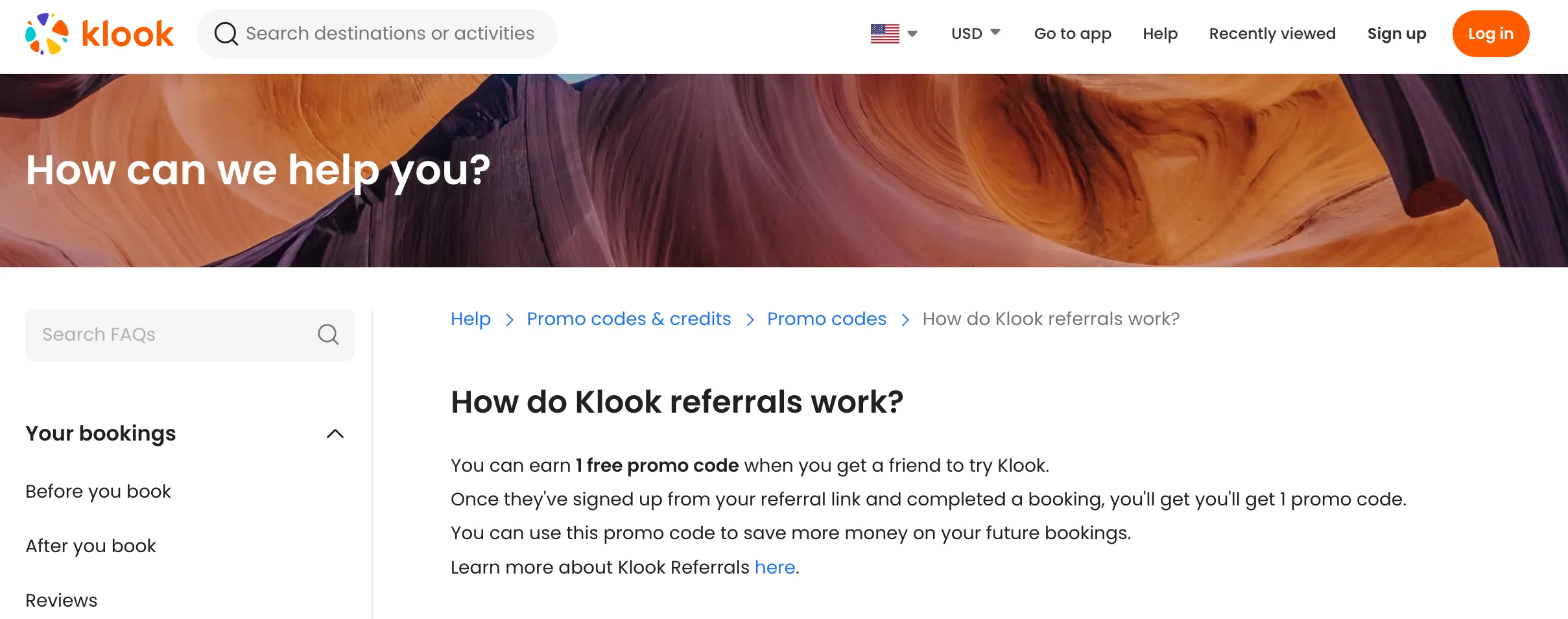
Referral promo codes are gained when a referral's friend becomes a new customer on Klook and redeems the voucher. The new customer gains a discount on the first booking and may also start the referral process.
Meanwhile, credit points are generated when existing and/or new customers complete an activity booked on Klook or by leaving a review of the activity.
Credits can be earned from 0.3-3% of the cost of the activity and could be used in future bookings. The level of points varies depending on the customer's tier or level (e.g., Explorer: 0.3-1%, Gold: 0.9-3%).
A customer must accumulate a minimum of 10 Klook Credits to gain the equivalent of 1 Hong Kong Dollar (HKD), with the credit value varying based on the exchange rate applicable in the activity's location.
Klook's referral promo codes aim to increase customer reach, while credit points with tier/levels focus on continuous and enhanced engagement of old and new customers.
These rewards are delivered on the website and app to satisfy their clients immediately, and the types of rewards align with their brand identity — new activity or travel destination. What a good mix that you can also consider in your brand!
Are you thinking of company stocks as rewards? Then it would be best if you will study how Robinhood, an investment company, did it. It uses a double-sided incentive where both sides could earn up to $1,500 in gift stocks per calendar year.
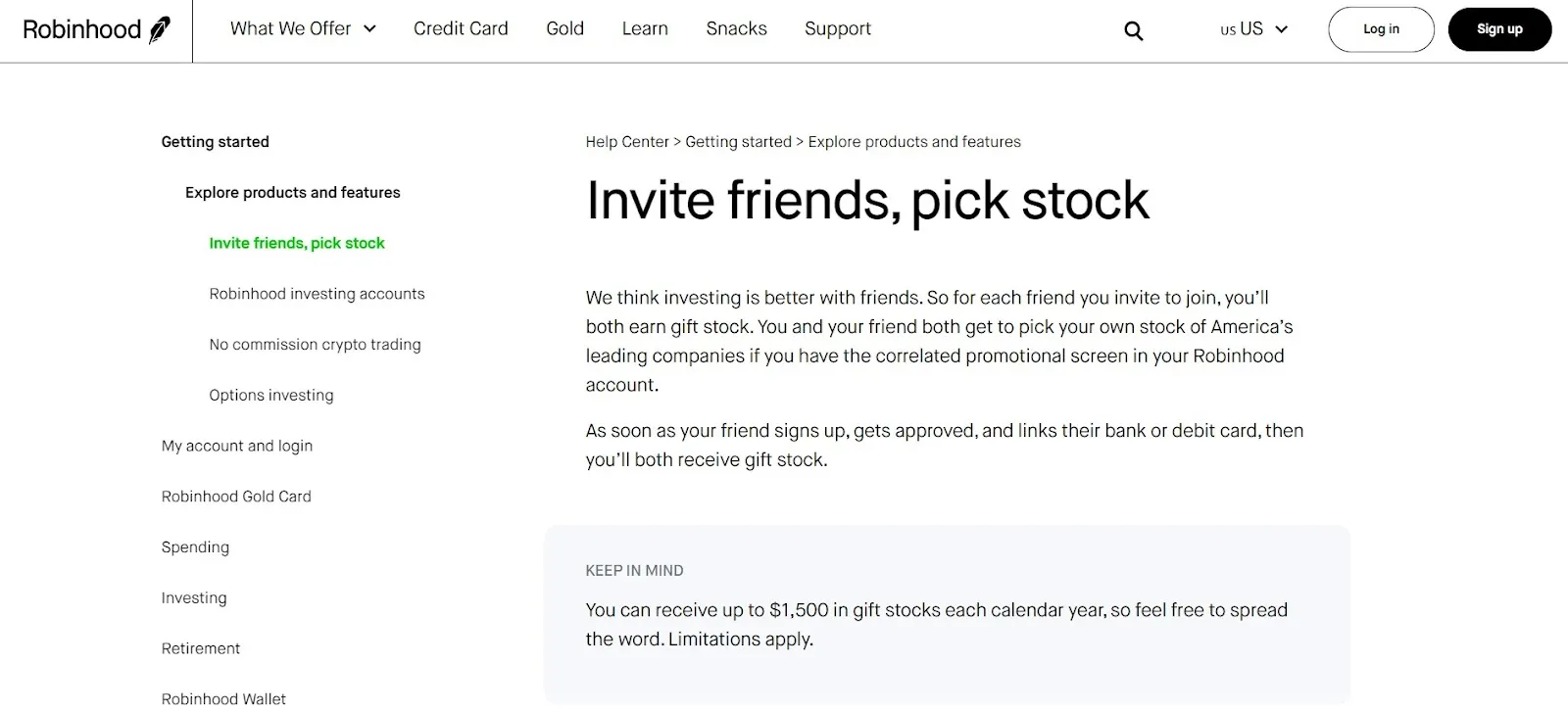
They offer two ways to earn stock.
The first is directly earning stock through the referral program, and the second is earning a $5 - $200 reward per successful referral, to be used in buying fractional shares. The highlight is that recipients now have the option to select their preferred stock from a list of the top-traded companies.
Tesla also rewards both the referrer and the new customer. It comes in two forms. Buyer benefits are for new customers who purchase their first Tesla product through a referral link. They will also earn a referral credit, and the loop will continue.
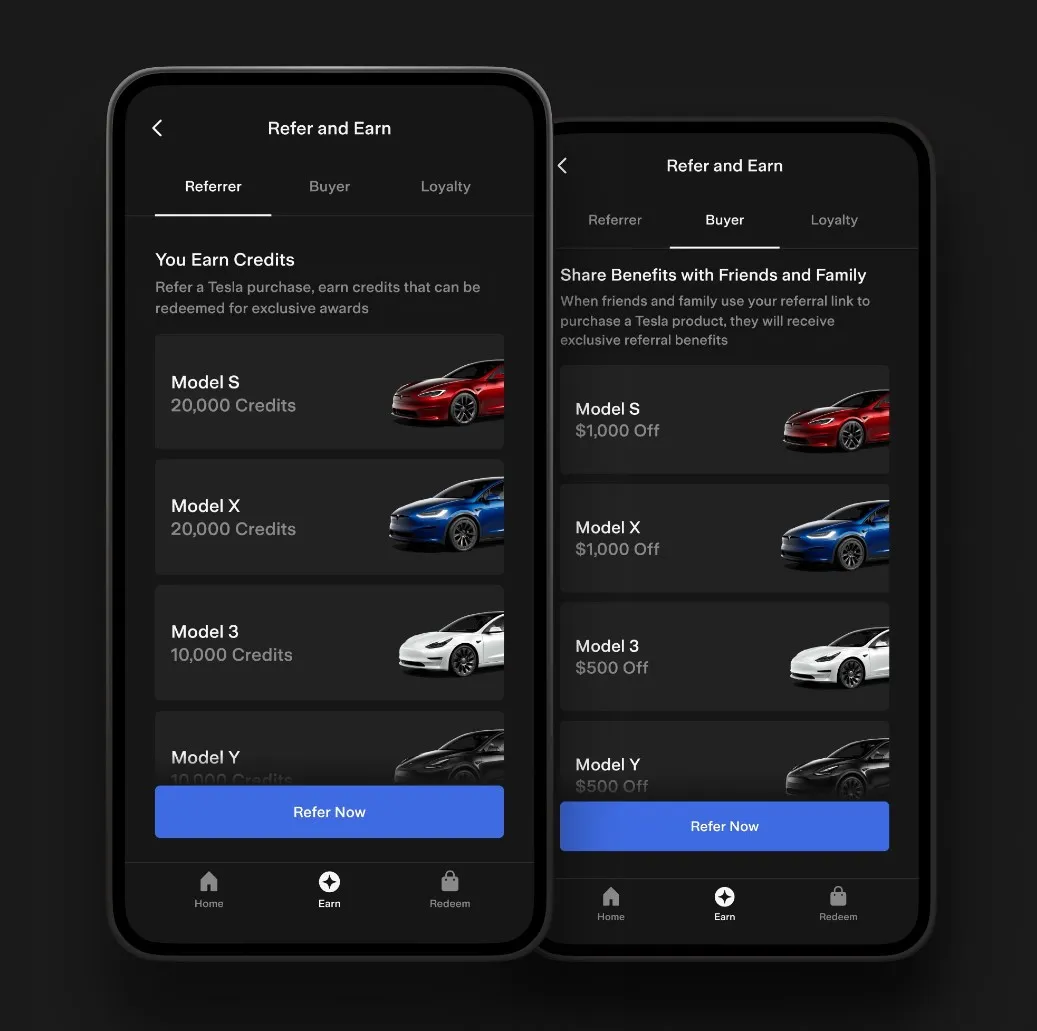
Meanwhile, customers will receive referral credits after successful referrals (e.g., purchasing your first Tesla product or taking the first demo drive). Tesla is strict about implementing the policy that referral links cannot be added once an order has been placed.
The referral credits, which are their internal currency, can be used to purchase a qualifying product from Tesla through their app but can't be used in their physical stores.
Standford Online of Stanford University offers continuing and professional education courses for people worldwide. They offer a two-sided incentive. A new customer could get a 10% discount on the course fee using a referral code.
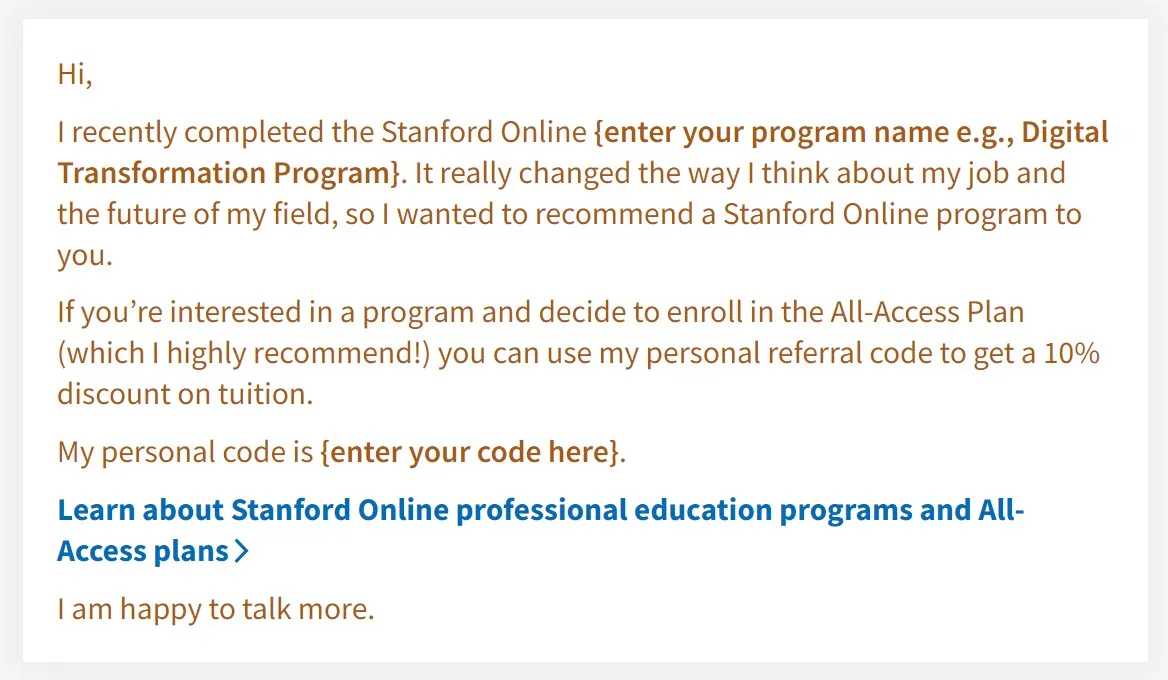
At the same time, once all the eligibility requirements are satisfied, the referrer may gain free access to a professional education course.
Wise, a money-transfer platform available in more than 100 countries, also rewards referrers and new customers in varying degrees. When new customers use the referral link to sign up, they can save on transaction fees in their first transfer.

Meanwhile, the referrer can earn cash as a referral bonus when three friends use the referral link and send at least £200 (and its local equivalence) in their first transfer.
Jet's referral program, ingeniously employing company shares as incentives, rewrote the playbook on pre-launch customer acquisition strategies.
Jet.com got clever and tapped into the excitement of being part of a fresh, growing company. They set up a contest that wasn't just for fun – it asked for real commitment, stirring up emotions and, for some, opening wallets.
They threw in a huge carrot: 190,000 shares split among ten winners, with a jaw-dropping 100,000 shares for the top spot. This move wasn't just smart; it turned heads, got people talking, and transformed bystanders into die-hard fans, eager to spread the buzz.

The results were astonishing. One participant even shelled out $18,000, aiming for that leaderboard summit. Before they knew it, Jet had a whopping 350,000 potential customers lined up, all before officially hitting the market.
This early surge of interest and the sizable customer base it garnered were pivotal in propelling Jet toward its subsequent multi-billion-dollar acquisition by Walmart. The buzz created by their referral program, the substantial media coverage it attracted, and the unique incentive of company shares transformed Jet's market entry strategy into a case study of innovative growth hacking.
Jet.com's success illustrates the compelling power of aligning a brand's launch strategy with bold, unconventional rewards, thereby ensuring a potent mix of anticipation, excitement, and engagement among its target audience.
As mentioned, referral rewards can be a big deal—or a deal-breaker. The best way to decide what's best for you is to consider your options.
Search for rewards that will push the awareness about your brand a bit further with the assistance of your happy and satisfied ambassadors.
Don't overthink it. Work with what you have, and remember that when you can offer more, you should probably do it.
It's best to seek support and learn from people who know how to set up a referral program and find the right rewards for your brands. Doing so will save you money and time while ensuring your brand achieves your goals.
Finally, use a tool to make it easier to manage your referral program and distribute rewards. We have one in mind; you might want to check it out.